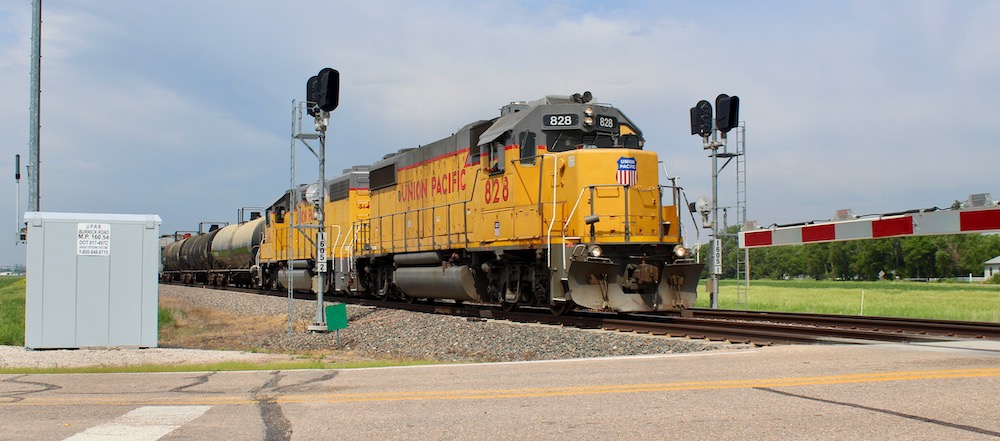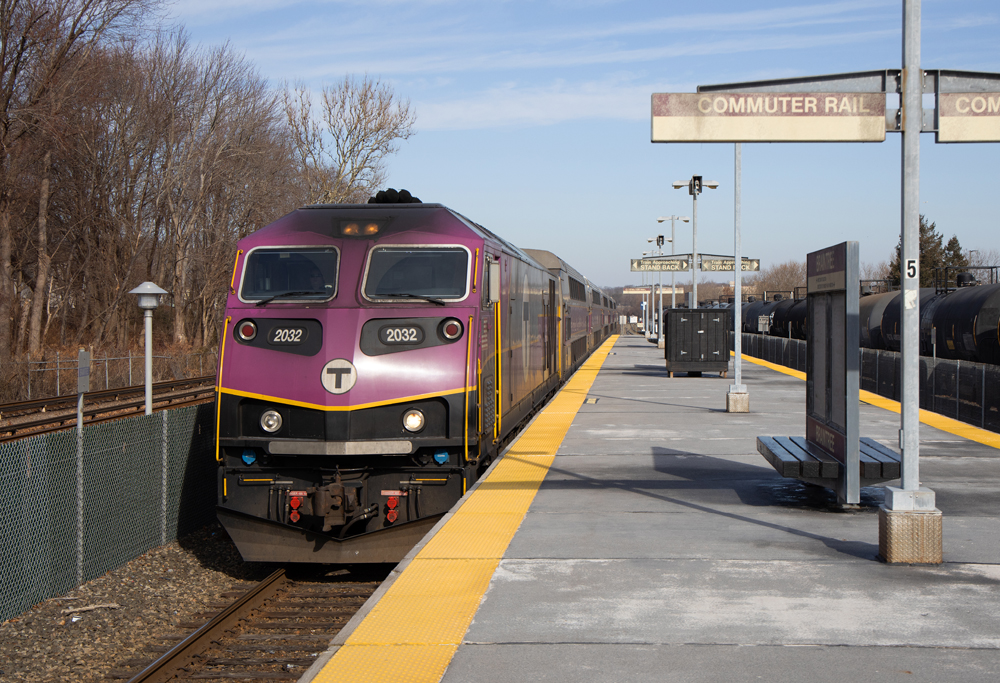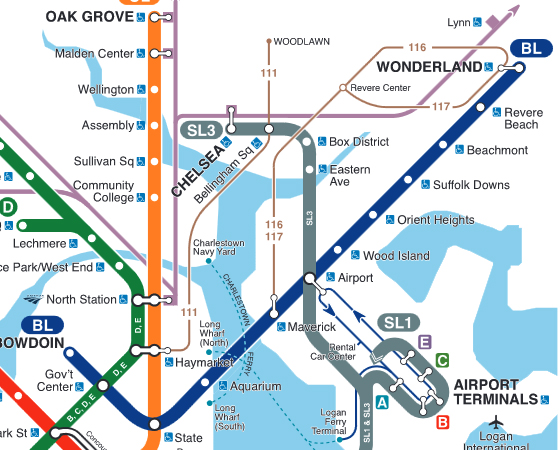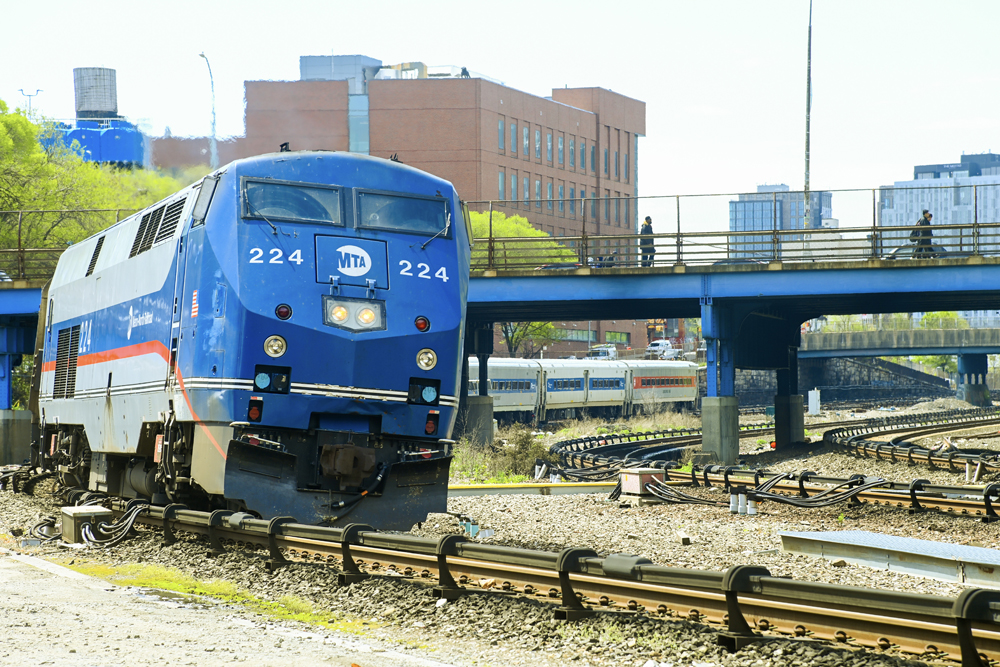
MANALAPAN, Fla. – Union Pacific, which has come under fire for its increased use of embargoes, has not fully shut down service to any customers as it grapples with congestion related to ongoing train crew shortages.
“It really is a tool of last resort for us. As a common carrier, we don’t have other mechanisms to fully suppress volumes coming on to our network,” Jennifer Hamann, UP’s chief financial officer, told an investor conference on Wednesday.
Federal regulators have ordered UP executives to appear at two days of hearings next month regarding the railroad’s increased use of embargoes, which have skyrocketed from 27 in 2017 to more than 1,000 so far this year.
Railroads commonly use embargoes to limit traffic in the aftermath of a derailment, washouts, or severe weather. But UP has become increasingly reliant on embargoes to limit congestion and twice this year has asked customers to reduce the number of cars on the railroad or face embargoes.
As a railroad slows down, and shippers see transit times go up, they typically use more freight cars to ensure their supply chains are not interrupted. But that only exacerbates congestion.

“We are very much working with our customers and many of our customers have employed what I call self help, where they have taken deliberate measures to help pull back on some volumes that are on our network [to] help ease some of the operating inventory,” Hamann says. “But in cases where that hasn’t been able to fully happen, we have put in place embargoes. I think it’s important to note though that an embargo can be done with 100% permits, so you allow permits for the customer to continue to ship against that embargo.”
None of UP’s congestion-related embargoes have completely shut off service to customers, Hamann says. Instead, shippers have been able to request permits that allow them to schedule a certain number of shipments.
“Again, it’s a tool of last resort. It’s not what we want to do. But in terms of trying to regain fluidity on the network and to be able to provide service to all of our customers, in some select locations and areas we have done that,” Hamann says.
Through October, UP accounted for 79% of embargoes issued by the Class I railroads this year, and 98% of them have been due to congestion, according to STB data.
“The number of embargoes has skyrocketed in recent years,” STB Chairman Martin J. Oberman told the RailTrends conference in New York earlier this month. Through Sept. 30 of this year, the Class I railroads have issued a combined total of 1,115 embargoes, he says.
“The vast percentage of these embargoes, over 80%, are the result of what the railroads call congestion — a railroad euphemism for ‘we don’t have enough crews to move our trains and keep our network fluid,’” Oberman says.
UP is working with customers to meter traffic in areas where the railroad is short of crews, particularly on its northern tier from Nebraska to the Pacific Northwest.
The Dec. 13-14 STB hearings will be an opportunity for UP to educate the board about its efforts to limit congestion, Hamann says.
Hamann acknowledged that some of the railroad’s customers who are likely to appear at the STB hearings are upset about the embargoes. “So I’m sure there will be some venting that occurs,” she says.
Congestion has worsened on UP in recent weeks, with average train speed falling and the number of trains held for lack of power rising to a three-month high. And in the weeks before Thanksgiving, the number of unplanned recrews were running at their highest levels in five months.
Due to lower volumes, the Thanksgiving holiday week allowed UP to make “good progress” clearing backlogs, Hamann says. The metrics UP will report to the STB this week show improvements in velocity and the number of cars on the network, she says.
Rick Paterson, an analyst at Loop Capital Markets who closely follows railroad performance metrics, says UP stands to gain the most from the Thanksgiving volume reprieve.
“In our view, UP has strayed into the gray area where embargoes are being used as a volume metering tool in the interests of network health (BNSF employed a similar metering strategy in June), rather than the traditional use as an emergency mechanism to stop the flow of freight into areas impacted by natural disasters,” he wrote in a Nov. 27 note to clients. “That violates the spirit of the railroad’s common carrier obligation, which has irked the STB. However, in theory at least, the situation should eventually self-correct once UP’s network gets back on its feet and there’s no longer desperate times that require desperate measures.”
Hamann spoke at the Credit Suisse 10th Annual Industrials Conference.














it all started with PSR and the current CEOs worship of Wall st. get rid of both and most of the problems will go away
Maybe its time to break up UP and bring back MoPac, SP, D&RGW, and others.
Edward, it would be an easy fix to change the slogan to We Can’t Handle It. Just add an apostrophe and a t. Wouldn’t take much time or material.
Can you hear this? That the sound of re-regulation thundering down the track into your throat UP. You deserve it.
growing up in the 60’s and 70’s, UP had a slogan, “we can handle it”, now it should be, give us your money, we’ll think about it.
EDWARD — I believe that slogan came later. In the 70’s I recall the slogan “DEPENDABLE TRANSPORTATION” painted on the locos. Someone in Omaha should look that one up.
Today’s slogan should be this: “WE RAISE OUR MIDDLE FINGER TO OUR CUSTOMERS”.
I’ve got a lot of things to do today…way more than I can get done in 24 hours…I’m going to slow the clock down for a few days, and get my work caught up….yeah, that should do it! What a brilliant idea.
UP simply refuses to carry any excess capacity into their service and pricing model. So they let demand bump into their service ceiling until things level out. That has been factored and pushed out to meet ever present financial demands from Wall Street. If the USG wants the Class 1’s to be able to carry excess capacity for these situations, their attitude is to then give us the pricing power to get our money back.
Just like today AT&T & Verizon doesn’t serve everyone and they certainly don’t serve where there is no money. They don’t want any excess capacity and to do so they rely on the government to add taxes and fees to your cell phone bill (regulation) and then force them to provide service. Because just like railroads, they don’t want that baggage in their pricing structure.
Just like railroads spinning off to shortlines, telecom spins off to these small regional carriers to take service areas they can’t make a large enough return on.
Very simple solution. Time to call their bluff. Embargo the entire damn railroad like they did with the final days of the Rock Island and then let the other railroads provide directed service on key segments and key customers. In essence put the UP out of business if they cannot or will not meet their common carrier obligation and let the other railroads provide the service at UP’s expense.
“… “The vast percentage of these embargoes, over 80%, are the result of what the railroads call congestion — a railroad euphemism for ‘we don’t have enough crews to move our trains and keep our network fluid,’” Oberman says. ”
Sir: I think it is safe to guess that UP understands that they don’t have enough people. That is why they and other carrriers are hiring people!
“As a railroad slows down, and shippers see transit times go up, they typically use more freight cars to ensure their supply chains are not interrupted. But that only exacerbates congestion.”
Is that so difficult to understand? Would you and other critics simply prefer that carriers do nothing to keep car inventories at a manageable level?
If UP doesn’t meter the use of private cars, they run the validated risk of repeating the disaster of 1997. Then you could roast the carrriers for not doing anything about the resulting congestion.
All of the above comments hit the spike squarely on the head
This sounds very similar to how internet bandwidth is “metered”. You get unlimited service unless of course it gets congested, then the carrier holds the right to meter or restrict you until things clear up. But is that how railroads should work?
Not sure what world UP lives in, but we call it capacity planning. You bake your capacity models based on not just your forecasts of what traffic you expect internally, but also from your shippers. You also include external traffic factors like the weather (agriculture), Oil prices (frac oil and sand), interest rates (lumber & construction products), currency exchange rates (containers from abroad) and there are many more.
I am not blind either, if your 6 month forecast shows a bump up in some over the rail commodity that you show will overload a particular route, it’s hard to permit and build new capacity to accommodate in such a short period of time.
This is why railroads have to have a good, comprehensive service forecast model that meets short, mid and long term requirements as they flex.
This is no different than what Wall Street uses to calculate impacts to the markets. Fidelity Investments pioneered the use of linear programming to develop investment models back in the 1980’s. UP (and the railroads) should be no different.
But if UP is only looking at the ‘short term’ models, then they will always be behind the eight ball because they won’t be aligning their capital correctly.
The Committee to Re-Elect Barack Obama was able to write and program a voter planning model using open source software and a bunch of college interns in less than a year. Their model was so comprehensive, they were more accurate than the Republican models which relied on word of mouth from precinct captains. It enabled them to target certain markets with advertising and door to door pitches. They even used it to optimize their use of social media.
When the waves of containers arrived on the west coast post covid, it was predicted in every shippers model, every publication, and even in the markets when the 90 day price for a container went through the roof. But the one thing nobody factored was the dock capacity and the backlog of trailers to dray the containers, along with the driver shortage.
These are the items that need to be included in any comprehensive forecasting model.
Embargoes are “the last resort”. Actually the “last resort” is shipping by UPRR. Anything of any value that the shipper actually wants to get where it’s going, it won’t be on UPRR.
A better olutio is to hire enough T&E. Also pay enough bonusus to allow for temp transfer of surplus locations?? Or has UP depleted all crew bases too much.?
“As a railroad slows down, and shippers see transit times go up, they typically use more freight cars to ensure their supply chains are not interrupted. But that only exacerbates congestion.”
So its the evil shippers who are causing the problems. How dare they add more cars to the system in order to move their product!
“None of UP’s congestion-related embargoes have completely shut off service to customers, Hamann says. Instead, shippers have been able to request permits that allow them to schedule a certain number of shipments.”
Wow, what a warm and fuzzy way to explain away that problem. The point is, you still are restricting traffic. So much for growth mode.
“Hamann acknowledged that some of the railroad’s customers who are likely to appear at the STB hearings are upset about the embargoes. “So I’m sure there will be some venting that occurs,” she says.”
Venting? I guess the shippers dont have a right to be upset?
“Congestion has worsened on UP in recent weeks, with average train speed falling and the number of trains held for lack of power rising to a three-month high. And in the weeks before Thanksgiving, the number of unplanned recrews were running at their highest levels in five months.”
Again, how is this the fault of the shipper?
Mr. Oberman’s mama didn’t raise any dumb kids. Ms. Hamann laments that there aren’t any other ways to “fully suppress volumes coming on to our network.” What a superb business model.